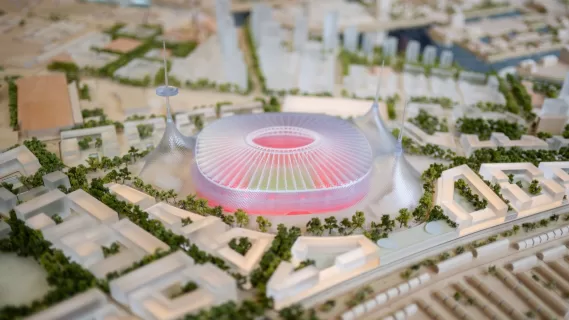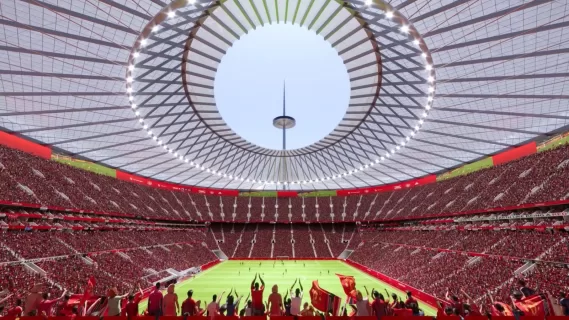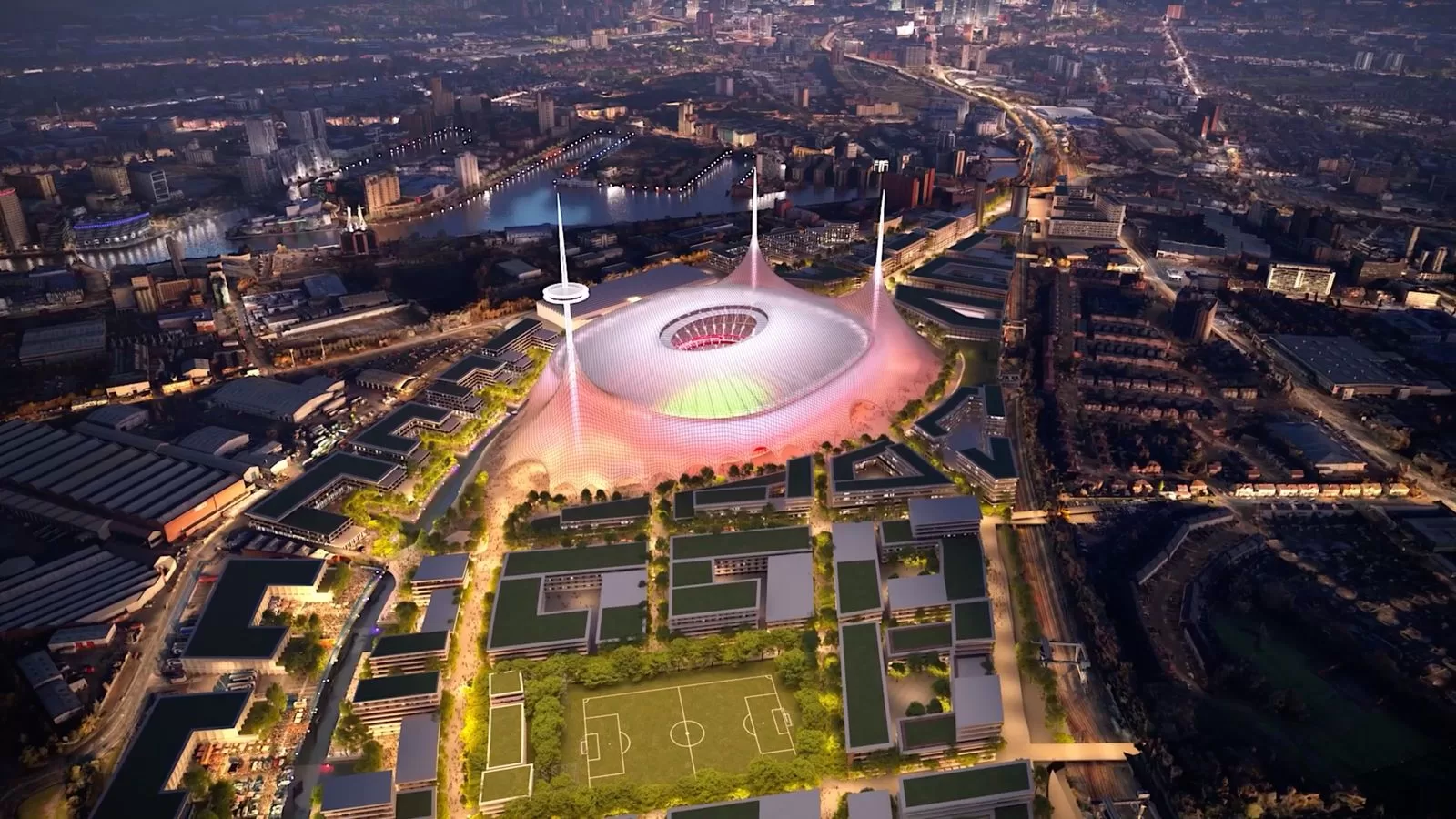Manchester United formally emerged from behind the curtains with plans for a new 100,000-capacity stadium on Tuesday, March 11, 2025. Here are some of the key questions about the project answered.
Where Will United Play During Construction?
Manchester United plan to continue playing at Old Trafford while their new £2 billion stadium is being built on an adjacent site.
“By building alongside the existing stadium, we will be able to preserve the feel of Old Trafford while creating a truly state-of-the-art stadium that transforms the fan experience mere steps from our historic home,” said co-owner Sir Jim Ratcliffe.
With Old Trafford serving United as the home venue for the past 115 years and now having seating capacity of nearly 74,000 spectators, the club is certain to maintain its match schedule at Old Trafford throughout the construction process.
How Is the New Stadium to Be Financed?
The club, which is in debt for more than £1 billion, hasn’t yet announced how the project is to be financed.
“If the government really gets behind the scheme, we will create a iconic football stadium,” Ratcliffe said, referencing possible public sector investment in subsidizing the lofty project.
What Is the Expected Economic Impact?
Manchester United’s own estimate is that the new stadium and general re-development of the Old Trafford area would contribute another £7.3 billion annually to the UK economy. The development will also generate 92,000 new jobs and lead to the construction of over 17,000 new homes.
How Long Will It Take to Complete the Stadium?
Part of the primary reason for expediting the process is that the stadium is sited close to the Manchester Ship Canal. The club plans to adopt a “modular” construction process, building large sections off-site and transporting them by boat directly to the stadium complex.

What will the New Stadium Be Like?
Nicknamed ‘New Trafford’ in blueprint documents, the stadium will have an imposing umbrella-formed roof which will harness solar energy and harvest rainwater.
Major design aspects of the Foster and Partners report are:
The tallest mast will be 200m, Manchester’s tallest building, taller than the 169m Beetham Tower.
New Trafford will be the European second-largest stadium, behind Barcelona’s Camp Nou.
The storied Stretford End will have 23,500 seats.
Hospitality seating will occupy 15.5% of the stadium’s capacity.
The stadium will be visible from the Peak District, Cheshire, and even the outskirts of Liverpool.
With these ambitious plans, Manchester United aims to re-write its history without losing the character of Old Trafford for future generations.

Manchester United’s New Stadium: Project Factsheet
Project Overview
Manchester United has unveiled plans for a new 100,000-seater stadium on March 11, 2025, designed by renowned architect Lord Norman Foster. Manchester United will construct the £2 billion project, unofficially dubbed ‘New Trafford’, on land adjacent to the current Old Trafford site.
Key Facts
Location & Construction
Site: Adjacent to the existing Old Trafford stadium
Timeline: 5-year construction period (accelerated from typical 10 years)
Current Status: Planning phase
Match Continuity: Club will continue playing at Old Trafford during construction
Stadium Specifications
Capacity: 100,000 seats
Size Ranking: Will become Europe’s second-largest football stadium (behind Barcelona’s Camp Nou)
Stretford End: 23,500 capacity
Hospitality Seating: 15.5% of total capacity
Height: Main mast will reach 200m, becoming Manchester’s tallest structure (exceeding the 169m Beetham Tower)
Visibility: Will be visible from the Peak District, Cheshire, and Liverpool outskirts
Manchester United’s new stadium Design Features
Umbrella-style roof designed to harvest solar energy
Rainwater collection system
“Modular” construction approach with components assembled off-site
Utilizes Manchester Ship Canal for materials transport
Economic Impact
Total Economic Contribution: Estimated £7.3 billion annually to UK economy
Job Creation: Expected to generate 92,000 new jobs
Housing Development: Plans include over 17,000 new homes
Government Involvement: Potential public sector participation indicated
Financing
Project Cost: £2 billion
Current Club Debt: Exceeds £1 billion
Funding Model: Not yet disclosed, with hints at potential government support
Read also: Manchester United Plans to Build UK’s Largest Stadium Instead of Redeveloping Old Trafford

